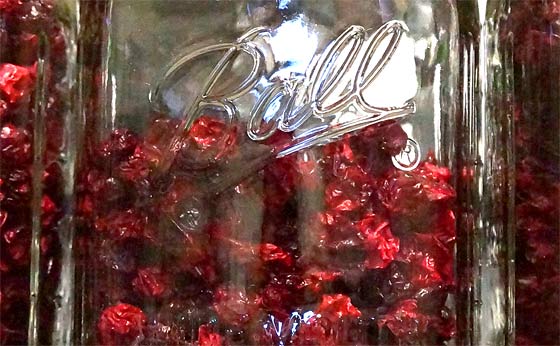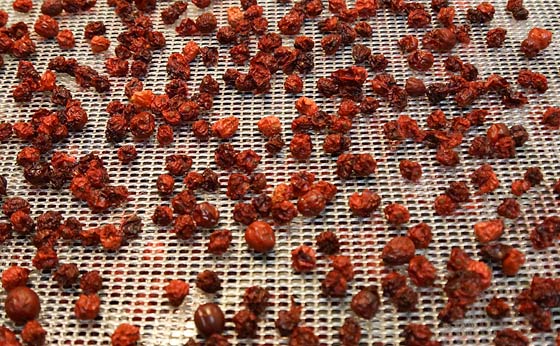How To Dehydrate Cranberries
I love cranberries. The other day I dehydrated about 7 pounds of cranberries which were on sale. They reduced to fit in two and a half quart size canning jars afterwards. I snapped a few pictures and decided to share the simple secrets how to dehydrate cranberries…
Except for raw cranberries which are typically available in 12-oz bags, the soft raisin-like cranberries you find in stores are processed first, usually with lots of sugar added. While this may please the sweet tooth, it is not the healthiest for you compared with raw unadulterated cranberries, which are themselves a bit tart.
Occasionally I enjoy adding them to hot oatmeal, salads, or even breads or muffins. Since it is difficult to find cranberries without the added processed sugar, I decided to buy them raw and dehydrate them for longer term storage. I discovered that the process of dehydrating them can be slightly tricky for optimal results, and here is what I learned…
Note that dehydrated cranberries are not going to be of the same soft pliable raisin-like texture as partially dehydrated and processed store-bought varieties like ‘Craisins’, which are commercially produced dried cranberries containing added sugar and coated in vegetable oil to keep them from sticking together.
I dehydrate cranberries until most of the moisture has been removed, and are still slightly pliable. This way I am assured that they will store longer (than if they were too soft-moist).
To dehydrate…
In a pot, bring water to a boil. I use about 1 quart of water per 12-ounce bag of raw cranberries.
When the water is boiling, dump in the raw cranberries and start a timer. It is important to wait until the water has boiled BEFORE dumping in the cranberries. I’ve tried it the other way and the cranberries just turn to mush.
It only takes 2 to 3 minutes once you’ve dumped them in. You will immediately begin to hear them popping as their skins split. If the skins don’t split open, then they will not dehydrate properly.
Trick #1… If they boil too long, they will turn to mush (which does not ruin them, but just makes for a different dehydrated result – cranberry patties of mush). I have found that 3 minutes is about the maximum. Once they split open, they begin to absorb water and soften rapidly. Not enough and they will be too hard. Too much, and you get mush.
Okay, between 2 and 3 minutes, dump them into a strainer.
Trick #2… Depending on how split they look and how water-soaked they are, you might consider using a spatula-spoon to slightly press-crush them. Not too much though… This will help the dehydrating process.
Then, simply lay them out on your dehydrator trays. Using my Excalibur, I set the temperature for 135 degrees (use setting for fruits) and begin checking them after 12 hours. I have found it takes about 16 hours, sometimes longer depending on how soaked the cranberries were.
Afterwards, for maximum long term storage, you could store them in vacuum sealed bags or vacuum sealed canning jars (that’s how I store them).
To rehydrate…
They take longer than other foods, and will not return to how they were after cooking. They will at best regain a somewhat tough raisin-like texture. An exception is if you drop them in boiling water (as in making hot oatmeal with the oats) they will soften up nicely.
Otherwise soak in a bowl for at least 30 minutes (longer is better) to be used garnishing salads, etc.
Enjoy the natural unprocessed and tart flavor of cranberries!
Condensed tannins in cranberries inhibit the oxidation of bad cholesterol, thereby protecting the body from atherosclerosis.
Tannins are considered an important contributor to a healthy heart.
Cranberries act as bactericide and affect the acidity of urine. In effect, they disrupt the development of kidney stones and are known to help prevent urinary tract infections.



